|
On New Year's Eve with broke with tradition a little and did a surprise THURSDAY Food History Happy Hour at 11 PM. Because it was spur of the moment, we didn't really have a specific topic, but we did talk about comparisons between 1920 and 2020, an update about my office/cookbook library, my family New Year's Eve traditions old and new, some of the "lucky" foods of NYE, the Swedish celebrations I grew up with, including Tjuegondag Knut and Sankta Luciasdag, 19th century New Year's menus, what I missed most in 2020, and hopes for 2021.
Vanilla Fig Bourbon Recipe
No historic recipe this time, but the fig bourbon turned out quite nicely! If you want to make your own, here's a nice recipe:
2 cups dried mission figs 1 vanilla bean bourbon to fill a quart jar Put the figs in a quart mason jar. Cut the vanilla bean in half and add to the jar. Fill with enough bourbon to cover the fruit. Let age 3-12 months before consuming. I had some on the rocks with ginger ale. And some of the figs may make their way into a boozy fruitcake at some point. Episode Links
Not too many this time around, but here are a few to whet your whistle:
The next Food History Happy Hour will be on Friday, January 15, 2021 at 8:00 PM EST. We're gonna discuss more in-depth January holidays, including revisiting New Year's, Twelfth Night, Tjuegondag Knut, and my birthday, with a discussion of birthday cake history! See you next time.
The Food Historian blog is supported by patrons on Patreon! Join us for awesome members-only content like free digitized cookbooks from my personal collection, e-newsletter, and even snail mail from time to time!
0 Comments
What a year this has been. A global pandemic, flailing economy, the end of truth as we know it, and the abject failure of political leadership in our country (to the point of cult-like devotion to a would-be dictator) - I don't think anyone thought 2020 would turn out like it did. But, surprisingly, it has a lot more parallels to 1920 than we might think. I've already written about comparisons between the coronavirus pandemic and WWI and the Spanish Flu, including eerie parallels with struggling onion farmers (similar things happened with milk and dairy farmers, but I didn't manage to get a blog post up about that!), and as 1920 was the start of Prohibition, I wrote about the Temperance movement and our road to Prohibition. Other parallels to 1920 include a widening income inequality, including struggles with stagflation (a.k.a. the "high cost of living"), the politics of laissez faire economics that favored big business over ordinary people, a post-war recession as European agriculture and manufacturing rebounded, racial tensions and violence and the rise of the KKK (including the work of the Daughters of the Confederacy to rewrite textbooks and put up Confederate monuments). All of these as-of-yet unaddressed issues that are all rising up again, 100 years later. When the year first started, I was looking forward to our own "Roaring Twenties" decade, but what I had in mind was more jazz, loosening social strictures, and feminism. Not global pandemic, economic and racial strife, and crazy politics. My 2020 New Year's Resolutions didn't turn out quite as I'd hoped. My goals were to write more, teach, organize, and form a food historian community. I didn't get as much writing done on Preserve or Perish as I wanted. I underestimated how much a global pandemic would hamstring the intense higher thought that is required for the complicated task of original research and book editing. I DID make progress though, and that's what counts. What I did to was write a lot more about cookbooks and historic recipes, which WAS one of my goals, as I look back. Although I did not get any online courses up (although at least two are percolating as we speak), I DID do a lot of virtual teaching, both informally through Food History Happy Hour, which was often the highlight of my week or month, and more formally with the incredible number of virtual speaking engagements I did this year (and already 2021 looks like it might outstrip 2020, now that people are used to Zooming). The organizing I didn't get much of a chance to do until this month! Some Christmas money meant I could afford to order 3 more bookshelves to match my existing ones in my guest-bedroom-cum-office-and-library, and that's about it in terms of what I can fit up here. I also rearranged where my desk is and made room for the new shelves, which should arrive next week. And while I didn't go about creating an intentional food historian community, I have watched with pleasure the new folks joining in on Facebook, the food history community on Instagram, and of course everyone who has supported me on Patreon. My goals in 2021 are a little more modest - keep Food History Happy Hour going as long as I can, keep plugging away on the book, and keep this blog going. And finish reorganizing my library and making my office more functional and cozy. I didn't expect to spend nearly as much time up here as I did, but working from home does that to a girl. Do you have any 2021 goals? Or don't want to jinx it? Top 10 Posts of 2020My maintenance of the blog was a little more hit or miss this year than I would have liked. Sadly, World War Wednesday kind of fell by the wayside compared to 2019, although I hope to bring it back in full force in 2021. I did, however, get to focus a lot more on historic recipes. Here are the top 10 blog posts (thanks, Google Analytics!), published in 2020, in order of popularity. 1. Black Food Historians You Should Know This one I published back in February of this year, but I wrote it because with a few exceptions, I felt that Black food historians were not getting their due in the food sphere. 2. Food History Happy Hour: Beef Fizz (1960s?) This is the only Food History Happy Hour post on the list, which is kind of sad considering how many of them I did! But no one could deny the lure of the beef fizz craze that made the rounds of the internet, thanks to a Reddit post. I still haven't tracked down where the original recipe came from, so if anyone has an idea, let me know! 3. Food and the "Flu": Spanish Flu of 1918 The coronavirus pandemic was on everyone's mind earlier this spring, and since comparisons abounded to the Spanish Influenza epidemic of 1918 (which lasted well into 1919), I thought I would see what I could dig up on the food history of the "flu." 4. The Real Story Behind the "Gross" Black and Orange Halloween Taffy Moral of the story here is apparently I need to hop on more random internet trends. This one was inspired by another meme making the rounds of social media and it was fun to dig into the real history. 5. Lydia Maria Child's Pumpkin Pie (1832) The timeliness of this post, which I put up the day before Thanksgiving, probably had a lot to do with its popularity, but it was also my first cooking demo video! So that was also fun. 6. World War Wednesdays: Gospel of the Clean Plate This short and sweet blog was one of the first of the year - discussing the issue of food waste and food conservation during WWI. Why it got so popular I have no idea, but there you go! 7. Celebrating Indigenous Foods Another one I managed to publish "on time" for Native American Heritage Month, it also came at a time of reckoning with American mythology around the pending Thanksgiving season. It was fun to research - there were a few foods on the list that even I didn't realize were indigenous to the Americas. 8. One Year Later - The Food That Built America I have to tell you - I STILL get people, old friends, acquaintances, and even occasionally strangers, who excitedly tell me - I saw you on TV!!! :D I'm just glad the show turned out so nicely and (spoiler alert) keep your eyes peeled for yours truly on at least one, possibly two more shows in 2021. 9. Scratch Chicken & Dumpling Soup (1942) The colder weather and the still-raging pandemic must have meant that folks wanted to stay in and be cozy. And this dumpling recipe from Ida Bailey Allen hit the spot. 10. Virginia Apple Pecan Election Cake Another timely one, this time posted ON election day. Although it's not a "real" election cake in terms of historical association with election day, it was still delicious and much easier than the yeast-based real deal. And that, my dears, is that. Did you have a favorite blog post from 2020? If you missed the earlier ones, you can always peruse the month-by-month listings on the blog (at right) or by category. You can also use the search box at the bottom of every page of the website. Here's to seeing 2020 quickly out the door, and hopefully welcoming in a kinder, more sane, more truthful 2021. The Food Historian blog is supported by patrons on Patreon! Join us for awesome members-only content like free digitized cookbooks from my personal collection, e-newsletter, and even snail mail from time to time! Thanks to everyone who joined me on Friday for Food History Happy Hour live on Facebook. This week, in commemoration of Memorial Day, we talked about its Civil War origins, the history of grave decoration as Decoration Day, cemetery picnics (and picnics in general), history of refrigeration, how food was preserved before refrigeration, including canning, with mention of my book review of Canned, a discussion of fireless cookers/hay boxes, including Sabbath cooking, historical spring (spoiler alert: June used to be spring), book update, including WWI New York City soldiers' canteens, agricultural labor shortages, comparisons between WWI and the coronavirus pandemic, and what I've been reading recently. Bishop Cocktail (1906)I've been looking for a port wine cocktail for a while so that I could crack open my new bottle of Brotherhood Winery's Ruby Port, which is delightful. And, as Anna Katherine pointed out, Friday was Drink Local Wine Night! And Brotherhood Winery - the oldest winery in the country - is located just a few miles from my house. As I mentioned in the video, the Bishop cocktail (notice that the Black Stripe is the very next recipe!) ended up tasting very similar to sangria, which is not a bad thing. But I would definitely cut down on the sugar next time. And having looked it up since the show, Jamaican rum is a dark rum - not at all close to the white Puerto Rican rum I was using. But in a global pandemic, you use what you've got! This cocktail comes from the 1906 How to Mix Drinks: Compiled, Selected, and Concocted by George Spaulding. Here's the original version, with my notes: Use large glass. Sugar, one tablespoons [try one teaspoon instead] Lemon, juice of one-half [or 1 tablespoon bottled] Orange, juice of one-half [or 2 tablespoons bottled] Port wine, one wine glass [ooops! I did a half, you can too] Jamaica rum, one-half pony [1/2 oz.] Fill with cracked ice, shake well and ornament with fruit [I used blood orange]; serve with straws. If you liked this post and would like to support more Food History Happy Hour livestreams, please consider becoming a member or joining us on Patreon. Members and patrons get special perks like access to members-only content.
Thanks to everyone who joined me last night for Food History Happy Hour live on Facebook. This week we made the Black Stripe cocktail - really a hot toddy - from the Roving Bartender (1946). We discussed unusual historic and heirloom vegetables, terrapin and mock turtle soup, the Victorian obsession with game meats, veal, the origins of Caesar salad, springtime greens and foraging, vegetable species diversity and gardening, heirloom grains, the centralization of American food production, tanneries and slaughterhouses, Laura Ingalls Wilder, and updates on my book! Black Stripe Cocktail (1946)I have to admit, this was not my favorite cocktail, but I think it might be that I am simply not a fan of hot toddies. As friend and bartender Mardy and I agreed, "That's a toddy! Hot watery alcohol." Lol. Fill a hot water glass (or an Uffda mug) 3/4 full with boiling water Add 1 spoon of molasses 1 ounce high proof rum (OR 1 1/2 ounces apple pie moonshine) Stir and drink while hot. If you liked this post and would like to support more Food History Happy Hour livestreams, please consider becoming a member or joining us on Patreon. Members and patrons get special perks like access to members-only content.
Thanks to everyone who joined me last night for Food History Happy Hour live on Facebook. I had a blast and everyone asked such great questions!
In this week's episode, we covered a LOT of ground and discussed how applejack is made, shrub, eugenics, Americanization of immigrants, comparisons between modern issues with dairy farming, dumping milk, and plowing under fields of vegetables and what happened during WWI and the Great Depression, types of dairy cows and how dairy farming works (including a discussion of veal), Victory gardens, agricultural policy history, historic baking, and flips (including Tom & Jerry). WHEW! The hour flew by and I had so much fun. You can watch the whole thing below.
And of course, I made a vintage cocktail! This week's cocktail is the Applejack Rabbit and it comes from the 1946 cocktail book, The Roving Bartender by Bill Kelly.
We talked a little bit about cocktail glasses and serving sizes because of course this week I did NOT use a Collin's glass, but rather a small martini glass. In his introduction to The Rover Bartender, Kelly writes, "As the drinks are shorter now, the glasses for mixed drinks should be shorter and the drink recipes in this book are especially for cocktail glasses of not over 2 1/2 ozs. If a larger glass is used, the proportions will have to rise. You may serve a pony of cognac in a 20 oz. snifter glass, but if a cocktail glass is not near full it is unsatisfactory to the customer." I can certainly agree! But as someone who prefers a cocktail to be only a few ounces, I can't say I enjoy the generally much larger glasses of modern bars and restaurants. They may be easier to handle and clean, but they're too big! Applejack Rabbit Cocktail (1946)
The original recipe is as follows:
1/2 spoon brown sugar (I used about half a tablespoon) 1/2 oz. orange juice 1 dash lemon juice 1 oz. applejack brandy Pour over ice in a cocktail shaker and shake for longer than you think you should to make sure the brown sugar is dissolved. Strain into a small cocktail glass, such as martini glass or old-fashioned champagne glass. Sip cold. Virginia Apple Cake Recipe
And, since we talked about historic baking, I thought I would share the recipe for apple cake I found recently in my copy of Virginia Hospitality (1976, my copy is the 1984 reprint). This particular Junior League cookbook is quite good with many of the recipes arranged by region and with decent head notes for many. Alas, this "Apple Cake" has neither headnotes nor region assigned. But it looked intriguingly easy and used up quite a bit of apples.
However, as I discussed in the episode, it really is a strange cake. As such, while I've included a photo of the original recipe, I've written my own version to help walk you through how the recipe should work.
2 cups flour
2 cups sugar 2 teaspoons baking soda 1 teaspoon cinnamon 1/2 teaspoon nutmeg 1/2 teaspoon salt (note - I would add 1 teaspoon next time, the cake tasted a bit "flat") 4 cups apples, peeled and finely diced (about 3 medium apples) 1/2 cup walnuts, chopped 1/2 cup (1 stick) butter, softened 2 eggs slightly beaten Preheat oven to 325 F. Grease a 9"x13" baking dish (I used metal). Whisk dry ingredients in a bowl, then add apples and walnuts and stir to coat. If butter is refrigerated, microwave in 10-15 second intervals until very soft but not totally melted. Add butter and eggs to the dry ingredients and mix/fold with a wooden spoon until no loose flour remains. It will seem like not enough moisture - just keep folding, it will come together. The batter will be very thick. Do not overbeat. Spread evenly in the pan. Bake for 1 hour or until done. (I baked mine for 1 hour and 5 minutes, as the middle still seemed a bit soft). In all, my husband LOVED this recipe, but it was not my favorite. Next time I would definitely add some extra salt as the cake tasted a bit "flat" without it. In retrospect, I also MIGHT have accidentally added 2 teaspoons of cinnamon instead of one? Oops. It was too much cinnamon for me, but as I said, my husband loved it as it reminded him of carrot cake. Baking it for an hour at 325 seemed like way too long, but it did result in nicely caramelized edges (all that sugar). However, all the apples melted into the cake! So next time I would probably cut them a bit bigger. I did almost mince them in some cases.
So what did you guys think of this week's episode? Are you going to join me next Friday on Facebook? I hope to see you there! Thanks again to everyone who watched live and remember, if you have any burning food history questions, you can send them to me in advance, message The Food Historian on Facebook, or ask live during the broadcast. See you soon!
If you liked this post and would like to support more Food History Happy Hour livestreams, please consider becoming a member or joining us on Patreon. Members and patrons get special perks like access to members-only content.
Y'know that old saw, "Those who ignore history are doomed to repeat it?" Well, like a lot of old adages, this one has a big grain of truth in it. Historians often can see parallels to the modern world as they study history. Indeed, my area of specialty - the Progressive Era and World War I home front - has led to LOTS of comparisons to modern life. But with the addition of the coronavirus lockdown, the comparisons grew more numerous. To that end, I thought I would catalog some of the striking similarities. Failure of Bureaucracy: Military SupplyOne thing that has becomes especially striking at this time is the failure of the federal government to manage national supplies during an emergency. In this instance, it's the management of medical supplies for COVID-19, particularly personal protective equipment (a.k.a. PPE). States are competing on an open market and with each other, driving up prices and leading to shortages. To make up the shortfall, ordinary citizens are creating homemade versions of masks, face shields, and other equipment. During the first months of the U.S. entrance into World War I, the exact same thing was happening. Historian Robert Ziegler in his book America's Great War: World War I and the American Experience, outlines the deplorable state of military supply following the Spanish American War. Individual battalions were competing with each other on the open market to purchase supplies, thus driving prices up. In addition, the United States had never fielded such an enormous army and the production of other military supplies, such as uniforms and rifles had yet to keep up with the demand of a suddenly-enormous army. According to historian David M. Kennedy, in his book Over Here: The First World War and American Society, soldiers were sent to Europe with hardly any training. Men and boys who had been recruited in July, 1918 were on the front lines by September. Some men arrived never having used a rifle, and had to take an intensive 10 day course before being sent into battle. The logistics of shipping war materiel, both within the borders of the United States and overseas was also a mess, causing railroad and port backups. Some credit the poor supply of soldiers in training camps (inadequate clothing, bedding, housing) with exacerbating the effects of the Spanish Flu pandemic. Combined with this was the efforts of the American Red Cross. Famed for providing bandages and nursing aid during the American Civil War, thousands of chapters sprang up across the nation and throughout 1917, women were encouraged to "knit their bit" by knitting sweaters, socks, wristers, and watch caps for "our boys" being sent overseas. Why? Likely because military supply chains were, as stated, in shambles and because it was easier (and cheaper) to task the nation's women with keeping soldiers warm than to mobilize factories. Wool socks in particular were in high demand because of the poor conditions in the trenches. But by 1918, according to historian Christopher Cappazola in his book, Uncle Sam Wants You: World War I and the Making of the Modern American Citizen, the federal government was frantically telling women to STOP knitting, likely because military supply was completely reorganized. Although there are plenty of resources about knitting in WWI and the American Red Cross (including this lovely one), few people seem to have made the connection between "knitting your bit" and the failure of military supply. It was only part-way through American participation in the war that the federal government reorganized military supply under a centralized Quartermaster General. It wasn't until the Korean War that the United States passed the Defense Production Act (1950), which empowered the federal government to compel private business to prioritize the production of war materiel and prevent hoarding and price gouging. If the United States were to learn the lesson of WWI supply today - the federal government would coordinate with individual states to purchase - and allocate - medical supplies where most needed, instead of bidding against states on the open market. Xenophobia, Immigration, RaceIn the years leading up to the First World War, the United States was inundated with immigrants from all over the world, but particularly Eastern and Southern Europe. The United States was also recovering from the abandonment of Reconstruction and Black Americans were becoming more and more prosperous, with a growing middle class. Combined with a brain and labor drain on rural areas, this led to people like President Theodore Roosevelt warning of "race suicide" for White Anglo Americans unable to keep pace with the more fertile immigrants. Roosevelt also worried about rural life and started the Country Life Commission to study and combat the drain of population from rural America to urban areas. Tempted by "cosmopolitan" life, reformers worried, young people would be corrupted and the bedrock foundation of democracy - the landowning yeoman farmer - would diminish. Unfortunately for reformers, the majority of people in rural areas lived difficult lives and particularly in the South, most did not own the land they farmed. But the idea that rural America, and farmers in particular, are the "salt of the earth" is an idea that has persisted even today. With "flyover country" being courted by politicians, especially conservative ones, with every election. Immigration and race remain hallmark dogwhistles in modern politics. The Trump campaign used the slogan "America First" on the campaign trail - echoing the campaign slogan of Woodrow Wilson leading up to his first term as a neutral isolationist. It was a policy he would abandon in his second term, as the U.S. entered World War I in the spring of 1917. Americans were notoriously isolationist in the early 20th century (except for their colonialist ambitions in Central America, Hawaii, and the Phillipines) and America's first propaganda machine had to be created to convince them that joining the war was a good idea. To convince them, Woodrow Wilson invented the idea of defending and spreading democracy (and American exceptionalism) abroad - a policy that has continued to be used in every American war since then. Attempts to Americanize immigrants remained in effect throughout the war. Progressive reformers from settlement houses and canning kitchens on up to proponents for the war which thought a draft would help Americanize immigrants tried to force people into the mold of White Anglo American (usually Northeastern) culture. Black Americans faced similar pressures, and segregated versions of just about every middle-class voluntary organization - including the Red Cross - was implemented during the war. Following the war, newly economically mobile Black Americans, buoyed by industrial jobs for war production, faced even more hostility than before. Resentment by racists clashed with confident (and armed) veterans returning from war. The Tulsa Race Massacre of 1921 is just one example of Black WWI veterans attempting to defend themselves and their communities. Race riots, lynchings, and a dramatic expansion of the Ku Klux Klan were the hallmarks of 1919, 1920, and beyond. Today, Black American communities still deal with over-policing, incarceration, and violence. Latinx-Americans have dealt with a dramatic ramp-up of incarceration, family separation, and deportation (even of children), as well as more casual racism. And Asian-Americans in particular have borne the brunt of some horrific incidents of racism directly related to the coronavirus - as the ignorant believe that they (regardless of whether or not they had been to China recently, or were even of Chinese descent) were "carriers" of the disease - another old saw of racism most famously used by Nazis against the Jews (among others). The High Cost of LivingIn the two decades leading up to WWI, the United States underwent a series of depressions and recessions. Starting with the Depression of 1893 (which the US did not recover from until 1897-98), and with smaller recessions in 1907 and 1913-14, the "high cost of living" (commonly abbreviated as "HCL" or "H.C.L.") saw a dramatic rise in cost of living, including food and housing, while wages stagnated. Called "stagflation" by economists, this situation led to labor unrest, and strikes, food boycotts, and food riots were all common during this time period. Socialists were also in political ascendancy due to income and labor inequalities. Labor strikes were often broken by deadly force. Food boycotts and riots remained the purview of the desperate - often women with starving children which tugged at the heartstrings of wealthy and middle-class White Progressives, even as some were organized by socialist activists (read about the 1917 food riots in New York City). Many of the strikes and riots of the 1900s and 1910s led to serious labor reform, including the ending of child labor, worker safety reforms, reduced hours, and more. New York City during WWI tried to pass a minimum wage law, but it was vetoed by the Mayor. Today's parallels include a different sort of high cost of living - most "luxury" items are cheaper than they've ever been, but housing, education, healthcare, and food costs have risen by as much as 200% in the last 20 years. In addition, democratic socialists and real, "bread and roses" socialists have seen their numbers spike in the last few years. Activists are fighting for a minimum wage increase, universal healthcare, and other reforms, although union membership has taken a steep dive in the last few decades. Coronavirus has only highlighted the "essential" role many low-wage workers play in American life, and some retail workers, cleaners/janitors, and restaurant workers are now being hailed as heroes alongside medical professionals and scientists. War Gardens & RationingOne particularly fascinating trend that appears to be occurring right now is the skyrocketing sale of vegetable seeds and plants. Tied in part to the fact that so many Americans are sheltering in place and have time to garden, the resurgent interest in "Victory Gardens" is also a reaction to temporary shortages in grocery stores (due to logistics, rather than supply) and fears that the food supply might be endangered by coronavirus. The First World War was also one of the first times in American history that a concerted effort to get ordinary people to plant kitchen gardens. Of course, part of that was because of the changing demographics of population. People in rural areas had almost always had kitchen gardens. But as more and more people moved into urban and suburban environments, and fresh food supplies became easier and cheaper to acquire, kitchen gardens became less necessary, and most people who could afford to focused on flower gardens instead. But the U.S. entrance into the war, with its commitment to feeding the Allies, came with very real fears that food would be in short supply. This was reinforced by rhetoric from Wilson and Herbert Hoover, the new U.S. Food Administrator, who knew that in the spring of 1917, existing crops would be inadequate to feed both Americans, their growing army, and the Allies without serious changes. Enter war gardens and voluntary rationing. Hoover was the brains behind the idea of voluntary rationing - he wanted Americans to show the world their personal fortitude and strength through voluntary efforts, including rationing. He also believed that the bureaucracy necessary to enforce mandatory rationing would not only be hugely expensive, it would also be ineffective. To lead by example, Hoover and the entire Food Administration were all volunteers. Rationing included refraining from eating wheat, meat, butter, and sugar whenever possible, and by the fall of 1917, "wheatless, meatless, and sweetless" days were implemented. Grain and flour substitutions, sugar substitutions, and vegetarian meals became more normalized during the war. The National War Garden Commission was also a voluntary organization, albeit a private, not public, one. Started by forestry magnate Charles Lathrop Pack, it encouraged Americans, especially school children, to plant "war gardens" (later renamed "victory gardens," a name that would resurface during WWII) which would provide fresh vegetables for ordinary people. Not only would this free up conventional food supplies, the production of local food would also free up transportation resources, which by the end of 1917 were becoming so congested that the United States temporarily nationalized its railroads. Spanish Influenza "One of the very effective ways of spreading precautionary advice." The man in the illustration wears a sign on his chest reading, "Influenza Warning: Don't talk into my face; don't shake hands; cough, sneeze, and spit into your handkerchief; stay home if you have a cold." Illustration from the Illinois Health News, 1918. "One of the very effective ways of spreading precautionary advice." The man in the illustration wears a sign on his chest reading, "Influenza Warning: Don't talk into my face; don't shake hands; cough, sneeze, and spit into your handkerchief; stay home if you have a cold." Illustration from the Illinois Health News, 1918. And, of course, the obvious one. I've already written a bit about the Spanish Flu, but it bears noting that during the course of the 1918 pandemic, the government was reluctant to report real numbers or spread information about the severity of the pandemic because they were worried that it would endanger the war effort or reduce morale. Some cities, like Philadelphia, held enormous and patriotic Liberty Loan parades, allowing the virus to spread like wildfire. In fact, despite evidence that the influenza strain likely started in the United States, it wasn't until neutral Spain was infected, and its newspapers reported the real death toll, that the general public learned of the pandemic. Hence the name, "Spanish Influenza." Similar things are happening now, with the Trump Administration's initial reluctance to admit coronavirus was a serious problem because they feared the effect on the economy. Conflicting information in the media (and from the President) about the severity of the virus and the need for social distancing and stay at home orders have exacerbated the problem here in the U.S. More recently, a dearth of testing has led to some experts to conclude that the death toll is severely underreported. We are now also learning that China has likely suppressed or underreported the true infection rate and death toll from coronavirus. Thankfully, unlike 1918, when newspapers largely cooperated with government propaganda efforts (under threat of having their licenses revoked, effectively putting them out of business), modern information is more accessible and immediate than ever through the internet. Although sifting fact from fiction is a bit more difficult these days. ConclusionThere are a number of other Progressive Era similarities to modern life - women's rights, environmental conservation, voting rights, and income inequality, to name a few - that I chose not to include in this list largely because they were less immediately relevant to the coronavirus pandemic. To learn more about food in World War I, check out my Bibliography page, which was links to lots of great books. I hope you enjoyed this read. It certainly helped me organize my thoughts around these similarities and I hope that we can learn from the successes and failures of the past. That's all any historian can hope. Thanks for reading. Stay safe, stay home. If you liked this post, please consider becoming a member or joining us on Patreon. Members and patrons get special perks like access to members-only content.
|
AuthorSarah Wassberg Johnson has an MA in Public History from the University at Albany and studies early 20th century food history. Archives
July 2024
Categories
All
|

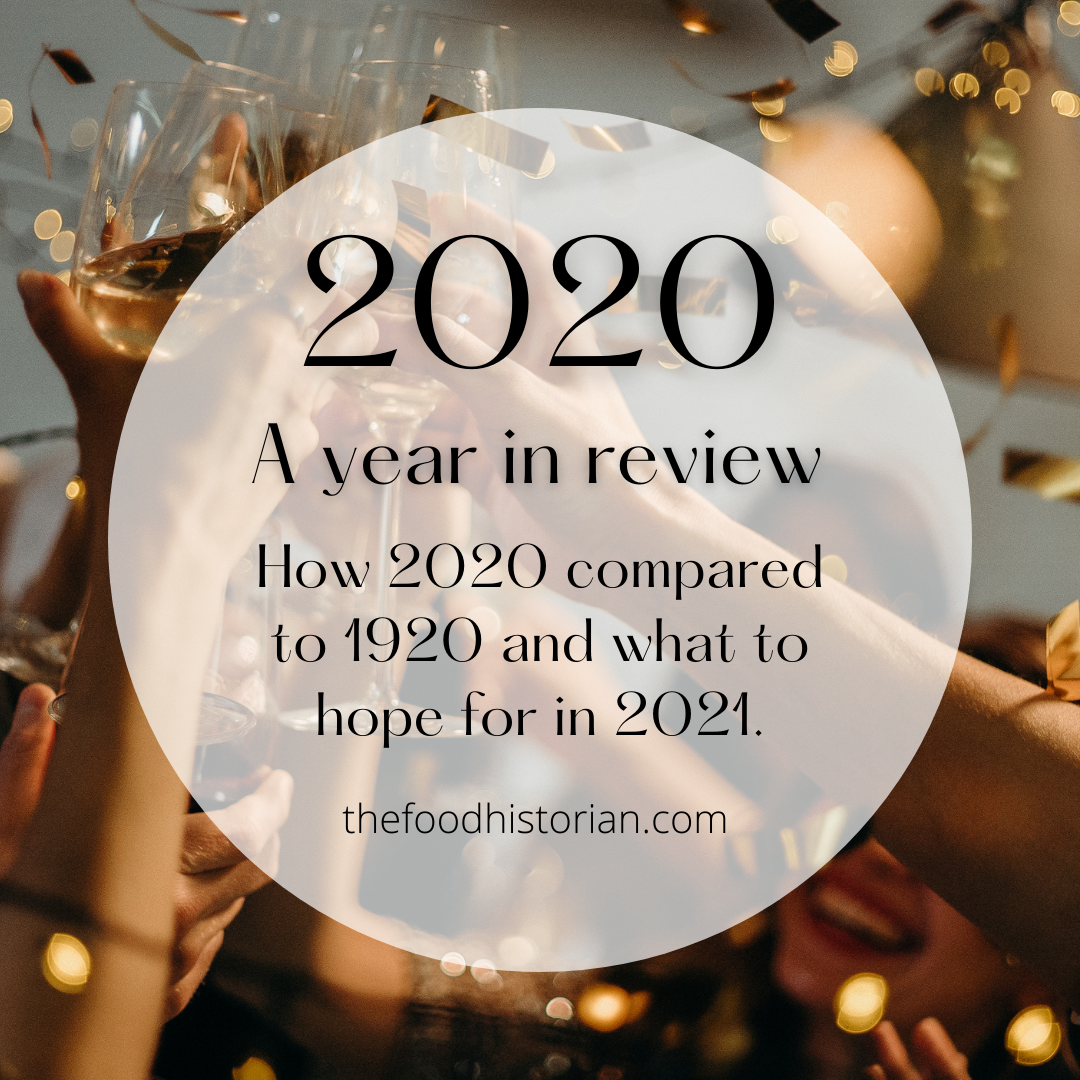
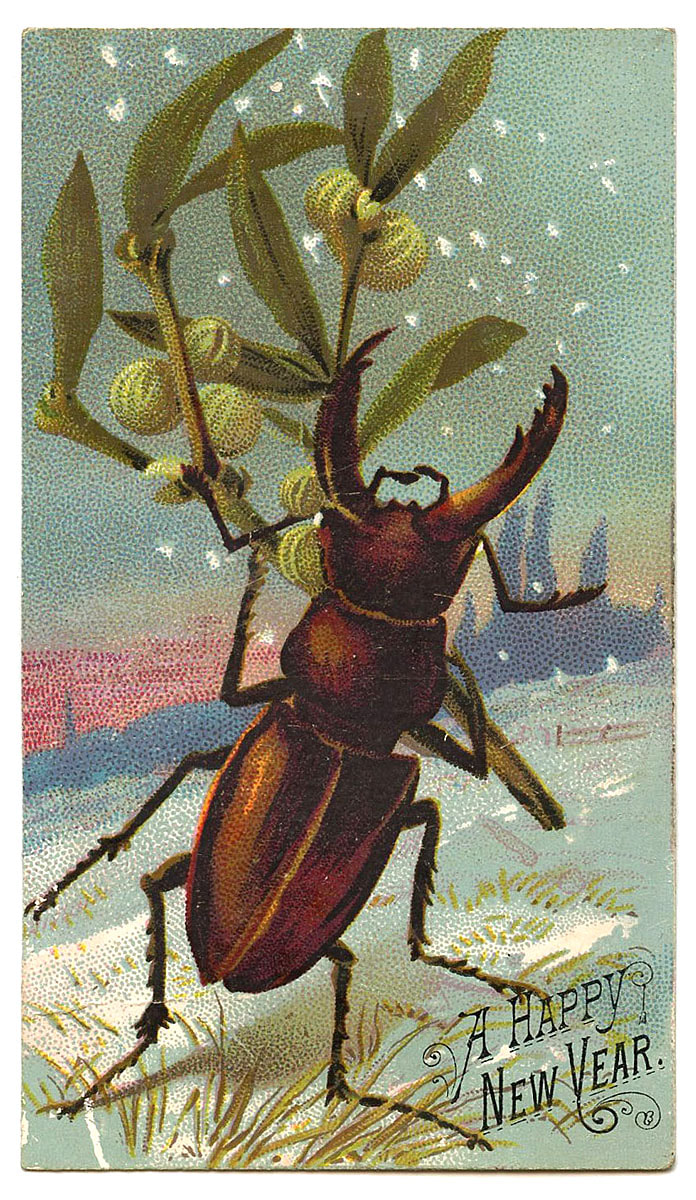
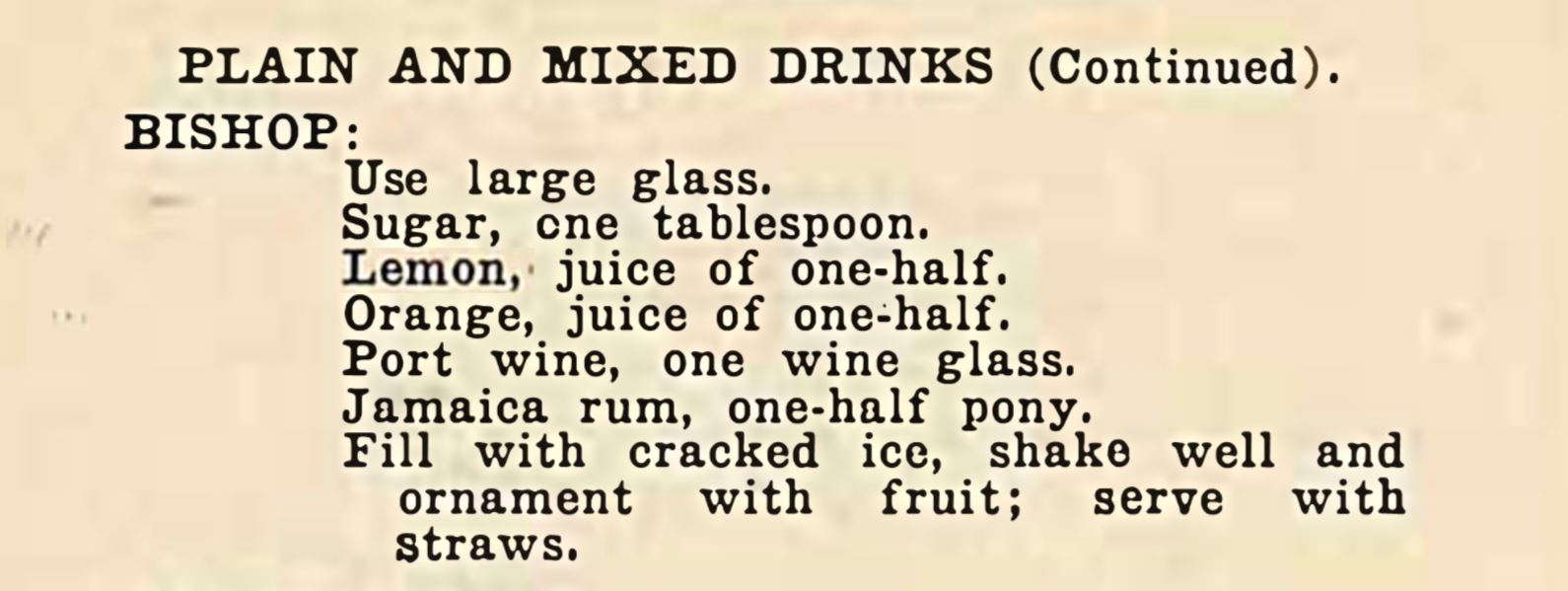

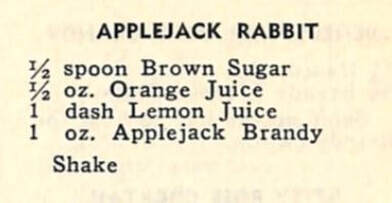
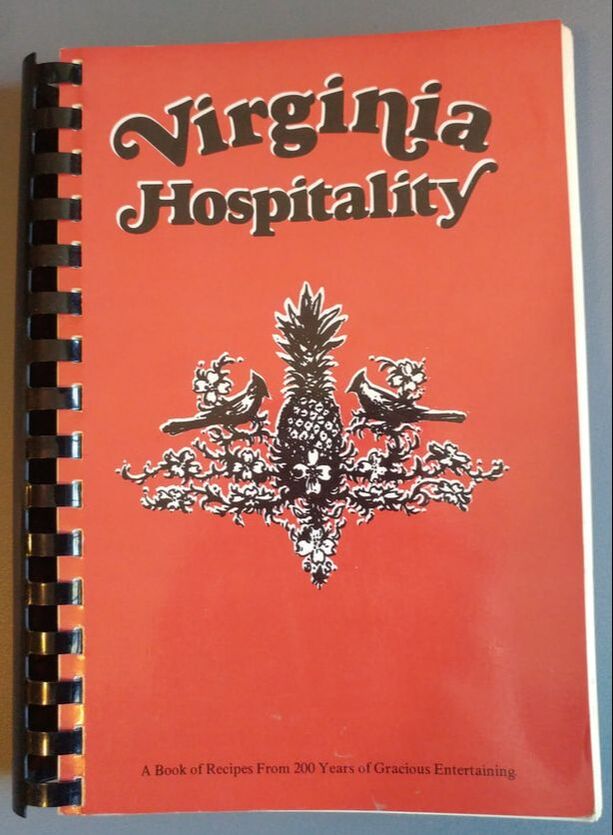

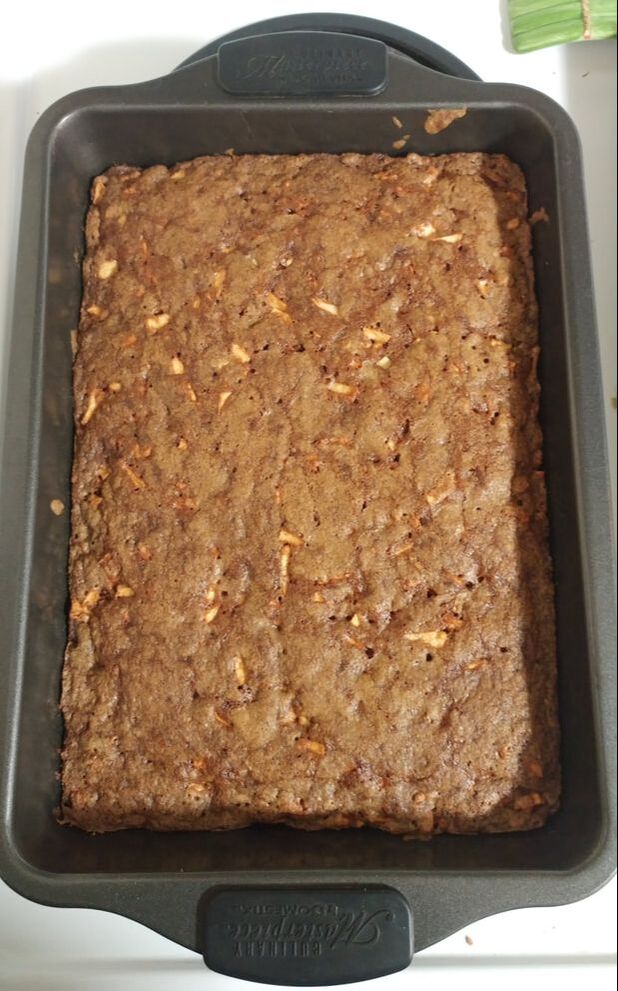


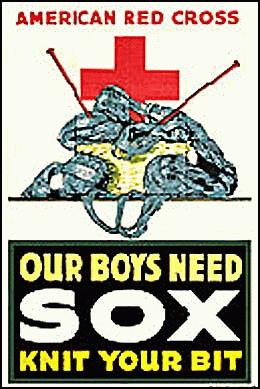

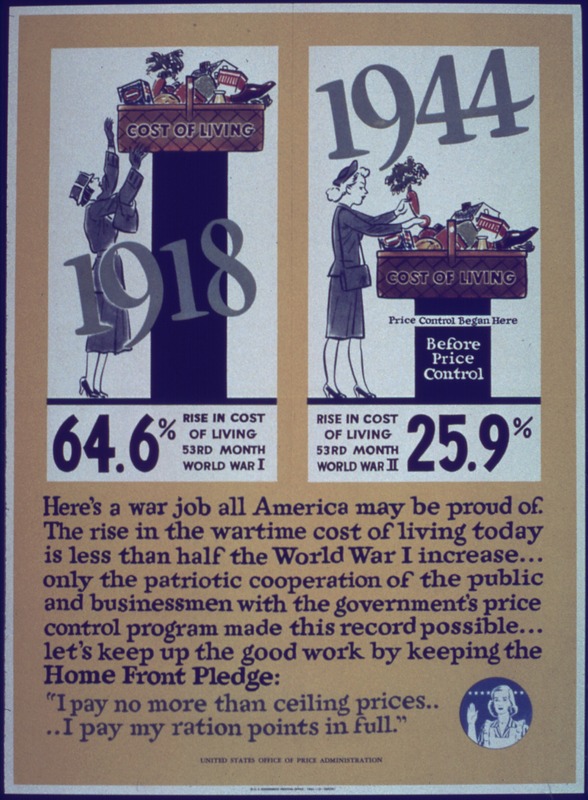


 RSS Feed
RSS Feed